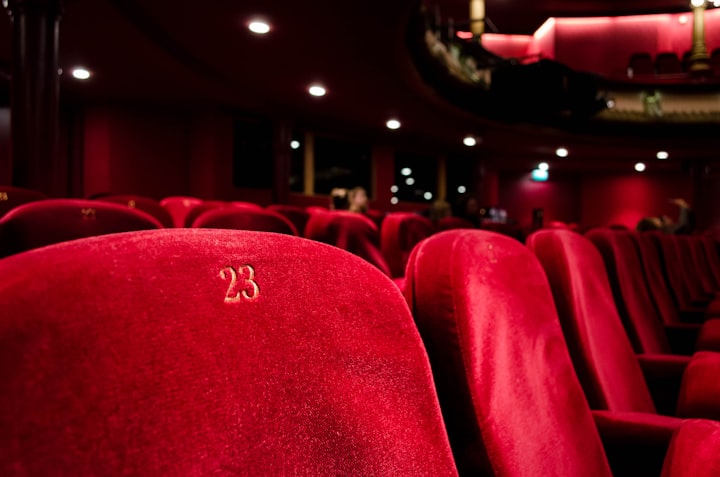Beyond The Binary: Exploring Nuances Within the Parallel Cinema Movement (1990s-2020s)
cinema Indonesia

The Parallel Cinema Movement in Indonesia, which flourished from the late 1960s to the 1990s, left a lasting legacy. But the story doesn't end there. As Indonesia entered a new era marked by political reform and technological advancements, Parallel Cinema adapted and evolved, continuing to challenge and shape the cinematic landscape.
The Post-Suharto Shift (1990s):
Winds of Change: The fall of the Suharto regime in 1998 ushered in a period of greater freedom of expression. This opened doors for filmmakers to tackle previously censored topics.
Diversifying the Narrative: Parallel Cinema diversified, with some filmmakers continuing the tradition of social realism, while others explored new thematic territories and stylistic approaches.
Blurring Boundaries: The line between Parallel and mainstream cinema became more fluid. Independent productions gained wider distribution, while mainstream films incorporated social themes once exclusive to Parallel Cinema.
Examples of Post-Suharto Parallel Cinema:
"Rekviem untuk Jakarta" (Requiem for Jakarta) by Slamet Rahardjo (2000): This film critiques the rapid urbanization and social issues plaguing Jakarta.
"Serambi Adat" (Customary Veranda) by Yudiswan A.B. (2012): This documentary explores the struggle of indigenous communities against land grabs and environmental destruction.
"Sokola Rimba" (Forest School) by Riri Riza (2013): This heartwarming film tells the true story of a man who establishes a school for children living in the Sumatran rainforest.
The Digital Age and New Challenges (2000s-present):
Digital Revolution: The rise of affordable digital filmmaking tools democratized filmmaking, allowing more independent voices to emerge.
Festival Circuit Success: Indonesian films gained international recognition at prestigious film festivals like Berlin and Cannes.
Genre Exploration: While social commentary remained a core element, Parallel Cinema embraced new genres like horror, fantasy, and dark comedy to explore social issues in creative ways.
Examples of Contemporary Parallel Cinema:
"Marlina Si Pembunuh dalam Empat Babak" (Marlina, the Murderer in Four Acts) by Mouly Surya (2017): This genre-bending film blends revenge thriller with social commentary on gender roles and violence.
"Nyai" by Garin Nugroho (2016): This historical drama reimagines the story of a concubine during the Dutch colonial era, highlighting issues of power and female agency.
"Autobiography" by Makbul Mubarak (2023): This psychological thriller explores themes of trauma, memory, and political violence in post-Suharto Indonesia.
The Road Ahead:
The future of Parallel Cinema in Indonesia remains dynamic:
Balancing Social Impact and Entertainment: The challenge lies in balancing social relevance with audience engagement. Can these films entertain while provoking thought?
Navigating the Digital Landscape: The rise of streaming platforms creates new opportunities for distribution but also introduces challenges like content saturation.
The Fight for Artistic Freedom: Despite greater freedoms, issues like censorship and corporate influence remain concerns for independent filmmakers.
The story of Parallel Cinema in Indonesia's post-Suharto era (1990s-present) isn't a singular narrative. It's a multifaceted landscape marked by diversification, internal debates, and a constant negotiation with the evolving political and technological climate.
Beyond Social Realism:
While social commentary remains a core tenet, Parallel Cinema has broadened its thematic scope. Films like "Love for Hire" (2005) by Riri Riza delve into the complexities of urban romance, while "The Raid" (2011) by Gareth Evans utilizes the action genre to explore themes of corruption and vigilante justice. This genre exploration allows filmmakers to engage wider audiences while weaving in social critique.
Blurring Genres, Blurring Lines:
The distinction between Parallel and mainstream cinema has become increasingly nuanced. Films like "Laskar Pelangi" (The Rainbow Troops) (2008) by Riri Riza bridge the gap, achieving commercial success while tackling themes of education and social inequality in rural Indonesia. This blurring of lines reflects a more audience-conscious approach, acknowledging that social commentary can resonate within entertaining narratives.
Internal Debates: Art vs. Impact?
The pursuit of artistic merit has sometimes clashed with the desire for social impact. Some argue that excessively focusing on entertainment value dilutes the movement's core message. Others believe that engaging storytelling is crucial for reaching wider audiences and promoting social change. This ongoing debate reflects the inherent tension between artistic expression and social responsibility within Parallel Cinema.
Regional Identity and Global Recognition:
The movement isn't confined to national borders. Collaborations with filmmakers from Southeast Asia continue, fostering a regional cinematic identity. Additionally, Indonesian films like "Impetigore" (2019) by Edwin found critical acclaim at international festivals, showcasing Indonesian narratives and social issues on a global platform. These collaborations and international recognition highlight the growing stature of Indonesian cinema and its potential for transnational conversations.
The Rise of Regional Voices:
The democratization of filmmaking through digital technology has empowered regional filmmakers outside Jakarta to tell their stories. Films like "Turah" (2016) by Wicaksono Wisnu Legowo explore the cultural and environmental challenges faced by communities in rural Java. This rise of regional voices enriches Parallel Cinema by presenting diverse perspectives and local experiences often overlooked in mainstream narratives.
The Struggle for Artistic Freedom:
Despite increased freedoms, Indonesian filmmakers still face challenges. Censorship, though less rigid, continues to be a concern, especially for films tackling sensitive political issues. Additionally, the growing influence of streaming platforms presents both opportunities and challenges. While platforms offer wider distribution, they can also lead to content saturation, making it difficult for independent films to reach audiences.
The Road Forward: Embracing Collaboration
The future of Parallel Cinema hinges on its ability to adapt and collaborate. Collaborations between established filmmakers and new voices can foster innovation and ensure the movement's continued relevance. Additionally, partnerships with streaming platforms to curate high-quality independent content can guarantee wider reach and audience engagement.
Conclusion:
The Parallel Cinema Movement in Indonesia is a testament to the enduring power of independent filmmaking. It has evolved from its social realist roots, embracing new technologies, exploring diverse themes, and navigating a changing political landscape. As Indonesia grapples with the challenges of the 21st century, Parallel Cinema stands as a beacon for artistic expression, social commentary, and a platform for diverse voices to be heard, leaving an indelible mark not just on Indonesian cinema, but on the global cinematic landscape.
About the Creator
Moharif Yulianto
a freelance writer and thesis preparation in his country, youtube content creator, facebook






Comments (1)
Great work! Well written!